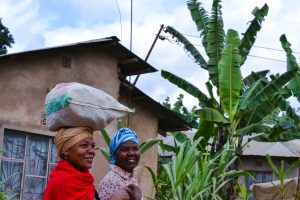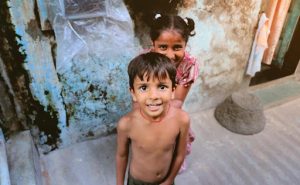Action 1: A supportive atmosphere for comprehensive food and nutrition policies
According to information from the second global nutrition policy review of 2016–2017 and data from the WHO Global database on the Implementation of Nutrition Action (GINA), a significantly higher number of countries (189) have national policies and plans that specifically include goals and strategies to improve nutrition and encourage healthy diets. Goals in line with the Global Nutrition Targets for 2025 are in the policies and programs of a total of 182 nations including 113 programs focus on stunting, 91 on female anaemia, 101 on low birth weight, 141 on overweight children, 129 on sole nursing and 101 on wasting.
Global Nutrition Targets, namely those for stunting, are incorporated in the United Nations Development Assistance Frameworks for 49 of the 92 nations. Additionally, 165 of the 189 nations have incorporated targets for non-communicable diseases linked to diet as 82 for high blood pressure, 132 for diabetes, 152 for overweight and obesity in adults and adolescents, and 92 for sodium/salt intake. Policies that encourage a healthy diet and prevent and treat acute malnutrition have made progress. 122 nations now have nutrition labelling laws, up from 51 in the years 2009 to 2010. Similar to this, more nations are taking action in the following areas:
- Food reformulation, up from 29 in 2009–2010 to 60 in 2016–2017 (40 of these countries are focusing on salt and sodium reduction).
- Trans-fat bans, up from 12 to 26.
- Fiscal policies to support healthy diets, up from 15 to 38.
From 37 in 2009–2010 to 81 in 2016–2017, the number of countries reporting that they are treating moderate acute malnutrition and severe acute malnutrition, respectively, increased from 47 to 87. Plans and strategies for the region are still being developed. In order to plan, budget for, implement and finance a shared set of nutrition results, a new strategy and road map have been designed for the years 2016 to 2020, and stakeholder networks are growing. In 2016, the movement’s network at the United Nations included 733 nutrition-focused employees in all of the movement’s nations, the majority of whom were citizens of the country in question.
The United Nations network focuses its assistance on sectoral and multi-sectoral policies, strategies, plans, and programs related to nutrition, including setting goals using the SMART approach (ensuring that objectives are Specific, Measurable, Attainable, Relevant, and Timely); building service delivery capacity, including program implementation; and assisting multi-stakeholder coordination platforms in carrying out their functions. The WHO has developed its ambition and action in nutrition 2016–2025, defining its role, unique value, vision and mission, and theory of change for advancing nutrition during the decade. This is in response to the resurging global momentum for improving nutrition and the proclamation of the 2016–2025 United Nations Decade of Action on Nutrition in 2016.
Action 2: Include in national nutrition plans all necessary and efficient health interventions that have an impact on nutrition.
In addition to the following areas, WHO has continued to create recommendations for efficient nutrition interventions: breastfeeding protection, promotion, and support in maternity and new-born care facilities; nutrition during prenatal care; micronutrient supplementation (iron in infants and children, adult women and adolescent girls, and postpartum women); industrial and point-of-use micronutrient fortification (maize flour and corn meal – foods consumed by infants and young children and pregnant women); feeding of infants affected by communicable diseases.
An analysis of the use of WHO guidelines has revealed that:
- 148 countries are offering breastfeeding counselling, placing a greater focus on exclusive breastfeeding for six months than on continuous nursing for two years and beyond.
- The project for baby-friendly hospitals is being implemented in 111 nations.
- Women of reproductive age and pregnant women are given iron supplements in 120 nations.
- 52 nations are implementing point-of-use micronutrient fortification of meals consumed by babies and young children, whereas 74 countries are fortifying wheat or maize flour (mostly with iron).
- Replacement feeding is the major strategy used by 67 countries to manage baby feeding in the context of HIV.
- Women and children can get dewormed in 69 different countries.
Action 3: Encourage the inclusion of nutrition in development strategies and programs outside the health sector.
The Committee on World Food Security has given the policy discussion around nutrition and healthy food systems a higher importance. The committee talked about funding for healthy food systems and avoiding stunting, as well as examining how agricultural policies affect dietary intake. A new work stream was approved for 2018–2019 for the Committee’s involvement in advancing nutrition. It discussed the work program of the Decade of Action on Nutrition and the progress report of the Second International Conference on Nutrition.
Action 4: Provide adequate human and financial resources for implementing nutrition interventions
Governments are making investments in programs that could improve nutrition by reducing poverty through social protection payment transfers, enhancing access to water and sanitation, and offering school lunches. Governments now allocate a considerably larger amount of their domestic budgets to areas that deal with the underlying factors that influence nutrition, opening the door to funding a more comprehensive agenda. Depending on the country, domestic government spending on undernutrition interventions can account for more than 10% of overall budgetary spending.
There are still large funding shortfalls for nutrition-specific initiatives. Between 2014 and 2015, global spending by donors on interventions focused on nutrition only increased by 1% ($5 million) while its share of total international development aid decreased from 0.57% to 0.50%. Just 0.01% of all international development aid is spent on the prevention and treatment of diet-related non-communicable illnesses. According to the World Bank’s investment strategy for nutrition, an additional US$ 70 billion over a ten-year period would be required to reach the goals for stunting, women’s anaemia, exclusive breastfeeding, and scaling up treatment for severe wasting. The Global Financing Facility was created to fill the funding gap in nutrition and reproductive, maternal, infant, and child health.
Action 5: Track and assess how policies and programs are being implemented
The 68th World Health Assembly adopted decision WHA68 (14) in May 2015, which decided:
- To accept the additional key indicators for the global monitoring framework on maternal, baby, and early child nutrition.
- To recommend that Member States report on the entire core set of indicators beginning in 2016, with the exception of progress indicators 1, 4, and 6 as well as policy environment and capacity indicator 1, which would be reviewed by the Executive Board once available and reported on starting in 2018 after receiving approval.
- To request more operational guidance from the Director-General.
For more information regarding the comprehensive progress on breastfeeding and nutrition of the baby, feel free to check out our Maternal, Infant, and Young Child Nutrition course here.







